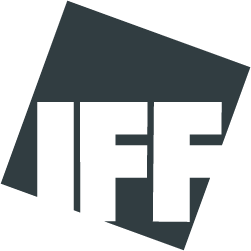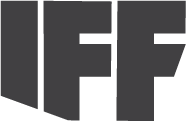SESSION 1: APPLICATIONS AND IMPACTS OF INTERNATIONAL STANDARDS AND GUIDELINES
Internasjonale standarder og retningslinjer gir et rammeverk av beste praksiser for opptak og deling av digitale kopier av kulturarvsamlinger. Denne økten vil fokusere på hvordan gjeldende retningslinjer, standarder og beste praksiser anvendes og tilpasses for bruk i ulike kulturarvsinstitusjoner og -organisasjoner. Foredragsholdere vil dele sine erfaringer og innsikter i bruk av standarder i virkelige situasjoner, inkludert beste praksiser for utnyttelse av retningslinjer i deres organisasjoner, samarbeid med kolleger ved andre institusjoner, samt utfordringer og barrierer for adopsjon av standarder. (Oversatt fra engelsk). Arrangeres av Imaging.
Les mer og REGISTRER DEG HER (Du trenger ikke være medlem i IFF for å melde deg på arrangementet. Rabbaterte priser gis ved medlemsskap hos IT&S.)
16:00-16:20
Welcome to digiTIPS 2024: Standards, Guidelines, and Our Work, Hana Beckerle, digital imaging specialist, Library of Congress
Abstract: An introduction to this year’s digiTIPS program, followed by a brief look at standards and guidelines, their evolution, and why they’re important in cultural heritage digitization.
16:20-17:00
Technical Guidelines for Digitizing Cultural Heritage Materials for Finnish Museums, Hannu Häkkinen, intendant, Picture Collections, Archives and Information Services, Finnish Heritage Agency
Abstract: A brief overview of the translation and the localization of FADGI Technical Guidelines and their implementation in the Finnish museum sector. This presentation will include information on national level metadata and file formats guides, adapting the FADGI guidelines for Finnish agencies, and plans for future projects.
17:00-17:30
Break
17:30-18:00
When Theory Meets Reality, Maja Atterstig, digital imaging specialist, Royal Danish Library
Abstract: How to determine quality levels, software for analyzing targets, and how targets should be captured may, in theory and when discussing with software producers and authors of guidelines, appear straightforward. However, challenges arise when desired quality levels prove difficult to achieve, when time constraints hinder proper quality assurance, or when it’s hard to understand the issues with your software or equipment. In this session, we will share the experiences we have encountered along the – sometimes challenging – path of developing a program for quality assurance within the digitization department of the Royal Danish Library. The session will, among other things, cover tests for scanners and camera-based digitization equipment, automatic and manual quality control, and documentation of the work.
18:00-19:00
Accessible Scene Referred Imaging: Live Demo Setting Up a Practical Scene Referred Image Capture Workflow, Chris Heins, imaging specialist, Metropolitan Museum of Art
Abstract: For years at the Metropolitan Museum of Art, the Imaging department has been implementing an ISO-19264 based scene referred imaging workflow at capture stations throughout many of the conservation and curatorial departments as well as within the Imaging department. Even with most of these imaging stations being operated by “non-photographers,” this effort has resulted in the elevation, to a very high standard, of the quality and color/tonal fidelity in the photography being produced throughout the museum. Utilizing commonly available hardware and software, this session will walk through setting up and testing a scene referred workflow. Documentation in PDF format will be made available.
19:00-19:30
Break
19:30-20:00
Peer Review in Cultural Heritage Imaging—A Framework, Dan Zellner, digitization manager, Northwestern University Libraries
Abstract: In the past two decades, the Cultural Heritage Imaging community has undergone remarkable advancements in technology and methodologies. With the growing capacity for users to access and compare diverse collections through innovative technologies, the need for standardized best practices, calibration, and consistency across institutions has become paramount. This presentation delves into the importance of achieving this consistency while allowing flexibility for creativity and innovation where necessary. It emphasizes the significance of peer review and dialogue within our community and introduces the work towards a manual designed to establish a framework for assessment, fostering a crucial conversation for the future of cultural heritage preservation and digitization.
20:00-20:30
Thoughtfully Crafted Digital Representations of Archival Objects: A Comprehensive Approach, Astrid J. Smith, Rare Book & Special Collections digitization specialist and production coordinator, and Chris Hacker, production coordinator, Stanford University
Abstract: Observing remarkable archival objects often elicits a feeling of wonder and awe. While many aspects of our digitization practices have become well-established, routine, and standardized, that feeling still inspires our work and pushes us to produce equally compelling digital objects. Digitizers can respond to different materials with academic and artistic sensibilities that incorporate subjective observations and probing questions. There is a wealth of crucially important phenomenological information that deserves capture and representation, much of which is minimized or absent with top-down photography at a copy stand, which tends to visually flatten. This talk will describe going beyond routine capture practices and will offer criteria for evaluating when and how to apply this approach to produce thoughtful and comprehensive digital representations.
20:30-21:30
Moderated Group Discussion with Presenters
Moderated by Hana Beckerle, digital imaging specialist, Library of Congress, and Stacey Evans, imaging specialist and project coordinator, University of Virginia Library

